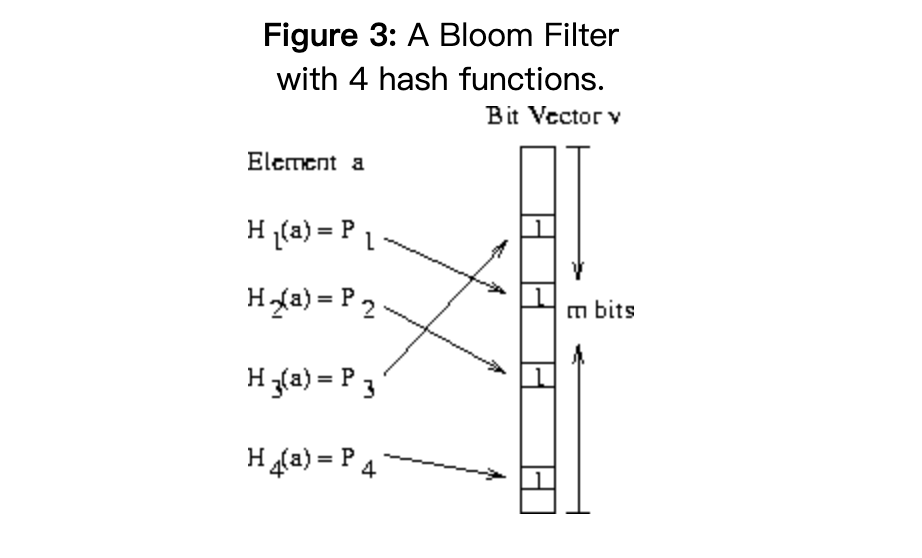A go bloom filter , base on different implement like `redis` ...
what?
上一篇在提到缓存击穿的时候, 有一种解决办法就是布隆过滤器
布隆过滤器(英語:Bloom Filter)是1970年由布隆提出的。 它实际上是一个很长的二进制向量和一系列随机映射函数。 布隆过滤器可以用于检索一个元素是否在一个集合中。 它的优点是空间效率和查询时间都远远超过一般的算法,缺点是有一定的误识别率和删除困难
why?
布隆过滤器: 可以判断某元素在不在集合里面, 因为存在一定的误判和删除复杂问题;
一般的使用场景是:
- 防止缓存击穿(防止恶意攻击)
- 垃圾邮箱过滤
- cache digests (缓存索引)
- 模型检测器
- 判断是否存在某行数据,用以减少对磁盘访问,提高服务的访问性能
how?
基本思想
通过多个hash方法, 进行多次 hash 操作, 使其值位于bit不同位上, 检测该bit上的数据是否为1, 从而判断是否存在

源码分析
interface: bloom.go
// 过滤器的核心实现, 通过interface的方式, 可以支持多种实现
// 目前实现了基于redis bit数据类型的过滤器
Provider interface {
Add(data []byte) error
Exists(data []byte) (bool, error)
}
// Filter is a bloom filter
Filter struct {
// todo counter
total int64
hit int64
miss int64
provider Provider
}
redis实现: internal/redis/redis_bit.go
// 实现Provider接口的两个方法
// Add implement Provider interface
func (r *Provider) Add(data []byte) error {
location := r.getBitLocation(data)
return r.set(location)
}
// Exists implement Provider interface
func (r *Provider) Exists(data []byte) (bool, error) {
location := r.getBitLocation(data)
return r.check(location)
}
// 核心方法
// 通过14次hash, 每次hash都在数据最后追加一个byte(index), 最后进行取模, 分布在map里面的每个区间
// 检查是否存在时, 对每个bit位进行判断, 如果有一个等于0, 则数据不存在
// getBitLocation return data hash to bit location
func (r *Provider) getBitLocation(data []byte) []uint {
l := make([]uint, maps)
for i := 0; i < maps; i++ {
hashV := r.hash(append(data, byte(i)))
l[i] = uint(hashV % uint64(maps))
}
return l
}
todo
1) 可以实现统计数据, 比如总量, 命中率, 丢失率等
2) 实现其它bloom过滤器provider(目前只有基于redis bit)
example
func test() {
filter := NewRedis("127.0.0.1:6379", "test-bloom", 1024)
_ = filter.Add([]byte("a"))
_ = filter.Add([]byte("b))
_, _ = filter.Exists([]byte("a))
_, _ = filter.Exists([]byte("p))
}
项目地址
https://github.com/sado0823/go-bloom
references
1.https://github.com/tal-tech/go-zero
2.http://pages.cs.wisc.edu/~cao/papers/summary-cache/node8.html